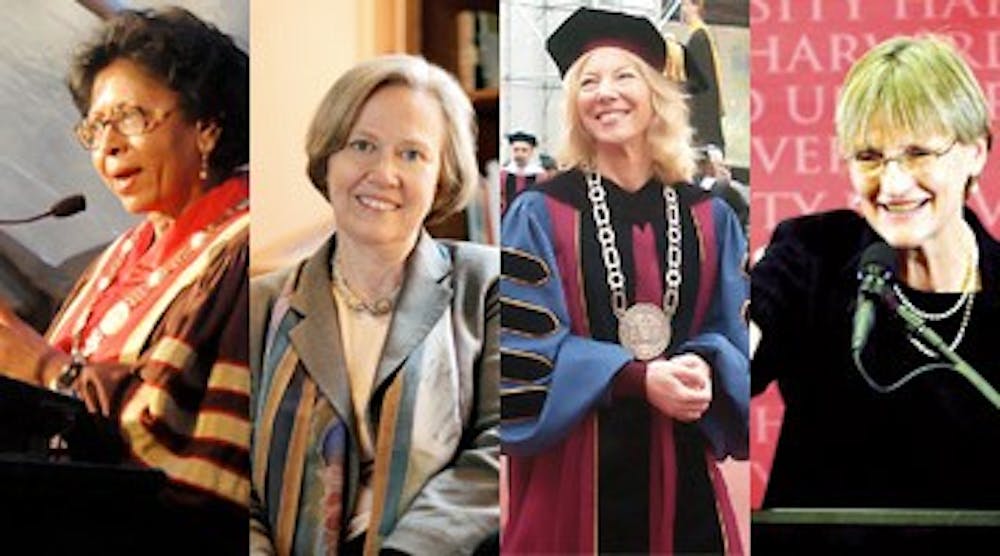
When it comes to senior-level administrations across the nation and at Penn, women may have broken the glass ceiling, but minorities may still have a few punches to go.
Across higher education, 45 percent of senior-level administrators are female but only 16 percent are minorities, according to a survey conducted earlier this month by the American Council on Education.
Even though Penn has seen increases in minority and female staff members in the last five years, it still has a ways to go. According to data released by the President's office, 54.5 percent of senior college administrators are female, and only 12.5 percent are minorities. The term "senior college administrators" includes those staff and faculty members in the top five pay grades.
"There's a whole lot to be done for sure," Vice President for Institutional Affairs Joann Mitchell said, even though minority makeup has grown in the past five years.
University President Amy Gutmann agreed - though Penn has " become a model for diversity in gender . there is more progress to be made in racial and ethnic minorities."
According to associate director of the ACE Office of Women in Higher Education Gloria Thomas, the barriers that minorities face result from "conscious or unconscious stereotypes," similar to those faced by women.
"Women and people of color have been trying to aspire to those roles," she said. "The gate keepers are not seeing them as individuals that are worthy of being in that leadership role."
Thomas added that committee members and board members who ultimately do the hiring at universities "bring a level of bias as well."
It seems to be a matter of history, according to some.
"This country is not fully able to overcome the messages of historical discrimination," Mitchell said.
She added that aside from discrimination, many people of color simply do not pursue careers in higher education.
"It is rare for a person of color or a white women to say they want to be a president at a university some day," she said.
Changing this trend would be a matter of "raising consciousness" about career options, Mitchell said.
Penn is trying to play its part, Mitchell said.
In 2002, minorities composed only 10.5 percent of senior college administrators - what Gutmann called a "small base" of 55 staff members. Fall 2007 statistics, however, indicated a total of 85 staff members - a 54.5 percent increase in the last five years.
"I think that the University is interested in increasing those numbers and they are actively looking for ways to do so," Valerie Allen, the African American Resource Center director, said. "I think that is has to be a concerted effort by deans and by schools to take steps towards that."
Mitchell pointed to two key initiatives - a Higher Education Resource Services leadership development program and Penn's own "Leadership at Penn" development program - as evidence that the University is working to increase minority and gender representation at Penn's top levels.
Penn sends two women to the HERS program and approximately 20 staff members - men and women minorities included - to participate in "Leadership at Penn" in Philadelphia each year.
Mitchell said these programs help form a "cohort" of people on their way up from the faculty and administrative ranks.
"They help put them in a good position to prepare themselves for upward mobility," she said. "This helps those that are not yet there but have the clear capacity to get there."
The Daily Pennsylvanian is an independent, student-run newspaper. Please consider making a donation to support the coverage that shapes the University. Your generosity ensures a future of strong journalism at Penn.
DonatePlease note All comments are eligible for publication in The Daily Pennsylvanian.








